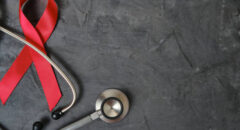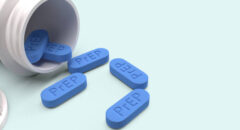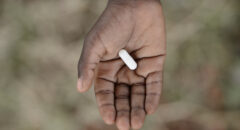
Men who have sex with men (MSM) continues to be a common route of HIV transmission in the U.S. among adults and adolescents, accounting for over 68% of the estimated new HIV diagnoses in 2013. Correct and consistent condom use is one of the primary means of protection from HIV infection and according to a recent Centers for Disease Control and Prevention (CDC) report, condom use is declining among men who have sex with men.
MUST READ: Understanding The Role Of PrEP In HIV Prevention
Findings from the CDC's report, the 2014 HIV Infection Risk Prevention, and Testing Behaviors in Men Who Have Sex With Men, are based on surveys from 9,640 MSM ages 18 or older living in 20 major U.S. cities. This 2014 survey from the National Board HIV Behavioral Surveillance (NHBS) project is conducted every three years. Twenty-eight percent of participants in the survey were Black males.
Key Findings
Nearly two-thirds of participants reported having anal sex without condoms at least once during the past year and 25 percent reported having receptive anal intercourse condomless the last time they had sex with a man. In 2014, 3.5 percent of HIV-negative MSM surveyed reported using pre-exposure prophylaxis (PrEP).
Evidence suggests that the decision to use condoms or not among MSM varies depending on four main reasons:
- their personal HIV status
- the status of their partner(s)
- whether the partner(s) is casual or their primary relationship
- sexual position (seropositioning)
The CDC report states:
"Research suggests that many persons modify their behaviors to protect their partners after HIV diagnosis [8]. Among MSM, condomless vaginal and anal sex with females was reported least often by HIV-positive–aware participants (3% vaginal, 2% anal) compared with HIV-positive–unaware (12% vaginal, 5% anal) and HIV-negative participants (9% vaginal, 3% anal) (Table 5). However, condomless anal sex with male partners was not reported less often by HIV-positive–aware MSM (67%) than by HIV-positive–unaware (65%), or HIV-negative MSM (65%). Further, the highest percentage of condomless anal sex with casual partners (44%) was reported by HIV-positive–aware MSM (Table 6), as well as the highest percentage of any bacterial sexually transmitted infection (STI) associated with condomless sex."
Though condom usage is declining, HIV testing rates among MSM are rising, according to the survey. Seventy-one percent of men surveyed in 2014 reported getting an HIV test during the previous 12 months, compared to 66 percent in 2011 and 62 percent in 2008. It's important to note, however, 94 percent of men surveyed in 2014 reported they had never been tested.
Reducing New Cases
Reducing the number of people who become infected with HIV is 1 of the 4 primary goals of the updated National HIV/AIDS Strategy of the United States (NHAS) and one of their primary strategies for reducing HIV infections is, "intensifying HIV prevention efforts in communities where HIV is most heavily concentrated, including blacks or African Americans."
In addition to access to and correct usage of condoms, recommended HIV prevention strategies among MSM also includes preexposure prophylaxis (PrEP), risk-reduction counseling and HIV testing.
Click here to read the full report.









